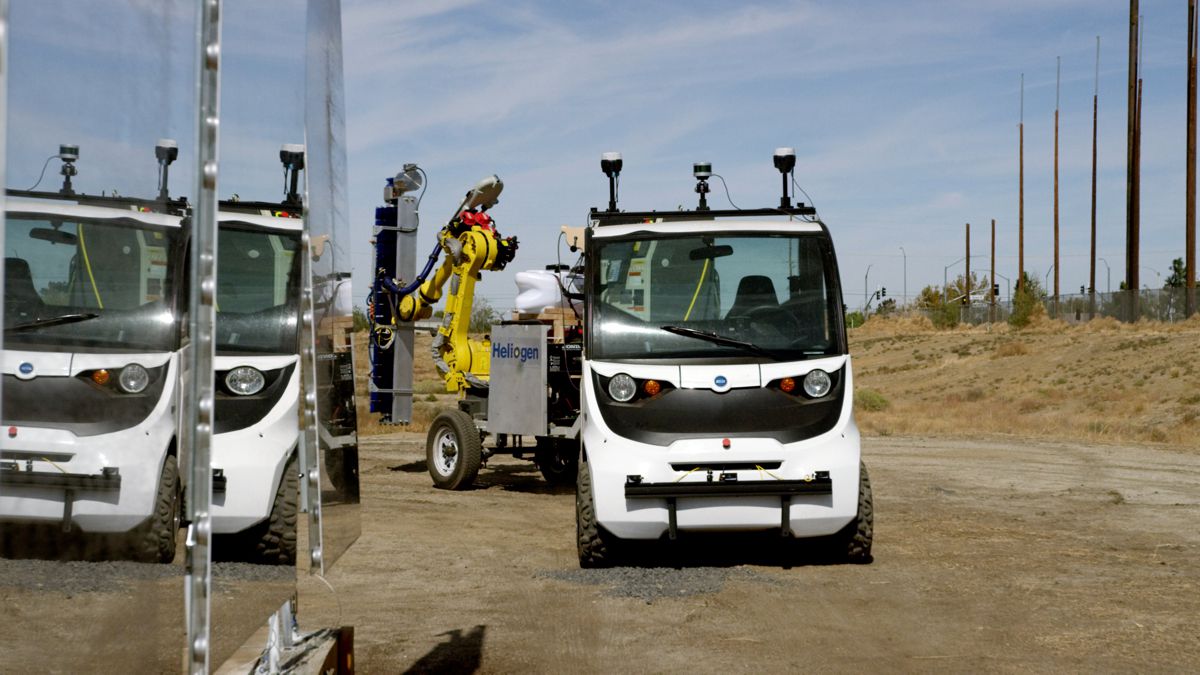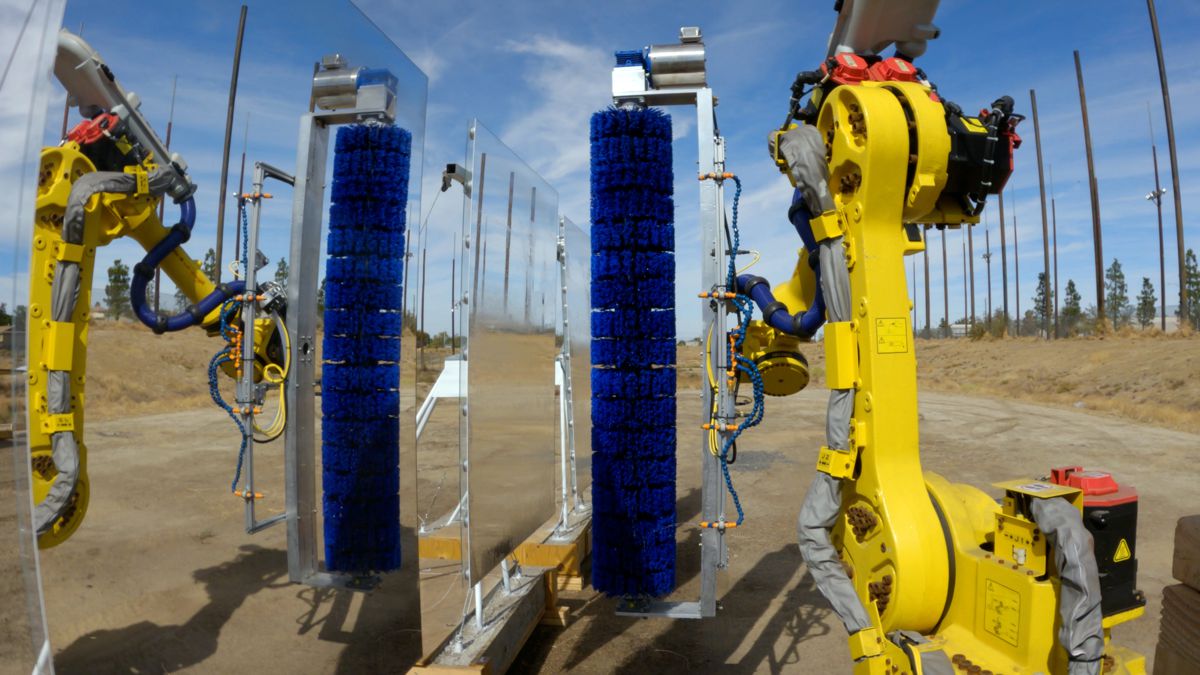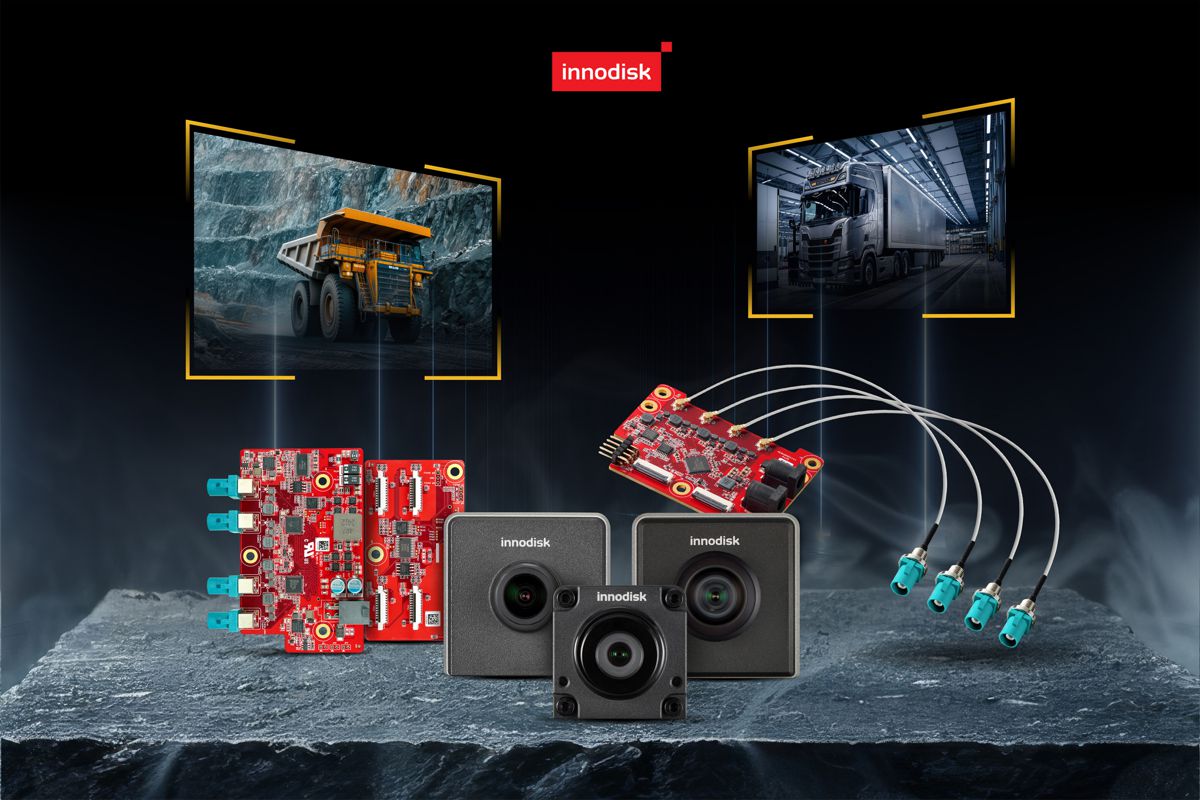Heliogen Robot lowers costs of full-scale Concentrated Solar Plants
Heliogen, a leading provider of AI-enabled concentrated solar power, today announced a new technological breakthrough in the production of low-cost renewable energy.
In field tests at Heliogen’s Lancaster, California facility, the Company successfully completed the first technical demonstration of an autonomous field maintenance system, Heliogen’s Installation & Cleaning Autonomous Robot & Utility Solution, or ICARUS. By bringing the same advanced technologies that enable its AI-enabled concentrated solar power systems to the task of installing and maintaining those systems, the Company’s latest innovation is expected to significantly reduce the time to deploy its concentrated solar facilities, as well as the costs associated with construction and ongoing maintenance.
Heliogen’s concentrated solar facilities employ arrays of mirrored heliostats that require upkeep and cleaning to ensure peak optical performance and a high level of energy generation efficiency. With traditional solar plants, conventional manual cleaning methods are expensive and labor-intensive, and as such, are only completed once every few months. To improve cost savings and operational efficiency, Heliogen designed the ICARUS system, which utilizes GPS, ultrasonic rangefinders and light detection and ranging (LIDAR) sensors for completely autonomous operation, while also collecting performance data to achieve operational and cost efficiency for the entire lifecycle of the mirror field. The ICARUS system is designed to autonomously clean a field of mirrors on a predetermined schedule, keeping the system at peak performance with minimal human intervention required.

In addition to cleaning and maintenance operations, ICARUS can also be used to reduce the cost of system installation by autonomously delivering heliostats from an assembly or inventory location to the field and installing them with an accuracy of up to two centimeters.
The ICARUS system can then record and transmit the installation position to the field model, improving the accuracy of the field control software and removing the need for expensive calibration. Heliogen’s future solar plant installations developed with ICARUS could be built around the clock, day or night, with computer-vision precision and with minimal physical labor.

ICARUS is designed to handle both structured and unstructured environments, maneuvering through varying topographies with ease. The system also has built-in obstacle detection and avoidance, so anything that suddenly appears in its path – whether people, animals, or debris – will be recognized and automatically avoided.
“Heliogen has pioneered the unique combination of hardware and software to drive up performance and drive down the costs of its concentrated solar systems. By taking advantage of huge boosts in processing power due to the advances of Moore’s Law, AI, computation, and computer vision, Heliogen aims to make solar energy more affordable than ever before,” said Bill Gross, founder and CEO of Heliogen. “This first technical demonstration of ICARUS is a leap forward in realizing Heliogen’s mission to replace fossil fuels with concentrated sunlight – cost-effectively and at scale.”

Heliogen’s breakthrough concentrated solar energy system utilizes AI to precisely align its mirrors with unprecedented accuracy, delivering carbon-free energy in the form of heat, power, or green hydrogen fuel.
Harnessing the same advancements in AI and automation, ICARUS is designed to streamline the installation and maintenance of Heliogen’s future full-scale concentrated solar plants to bring down the cost of renewable energy for commercial and industrial applications. ICARUS is expected to be deployed across Heliogen’s full-scale facilities by 2023.



















